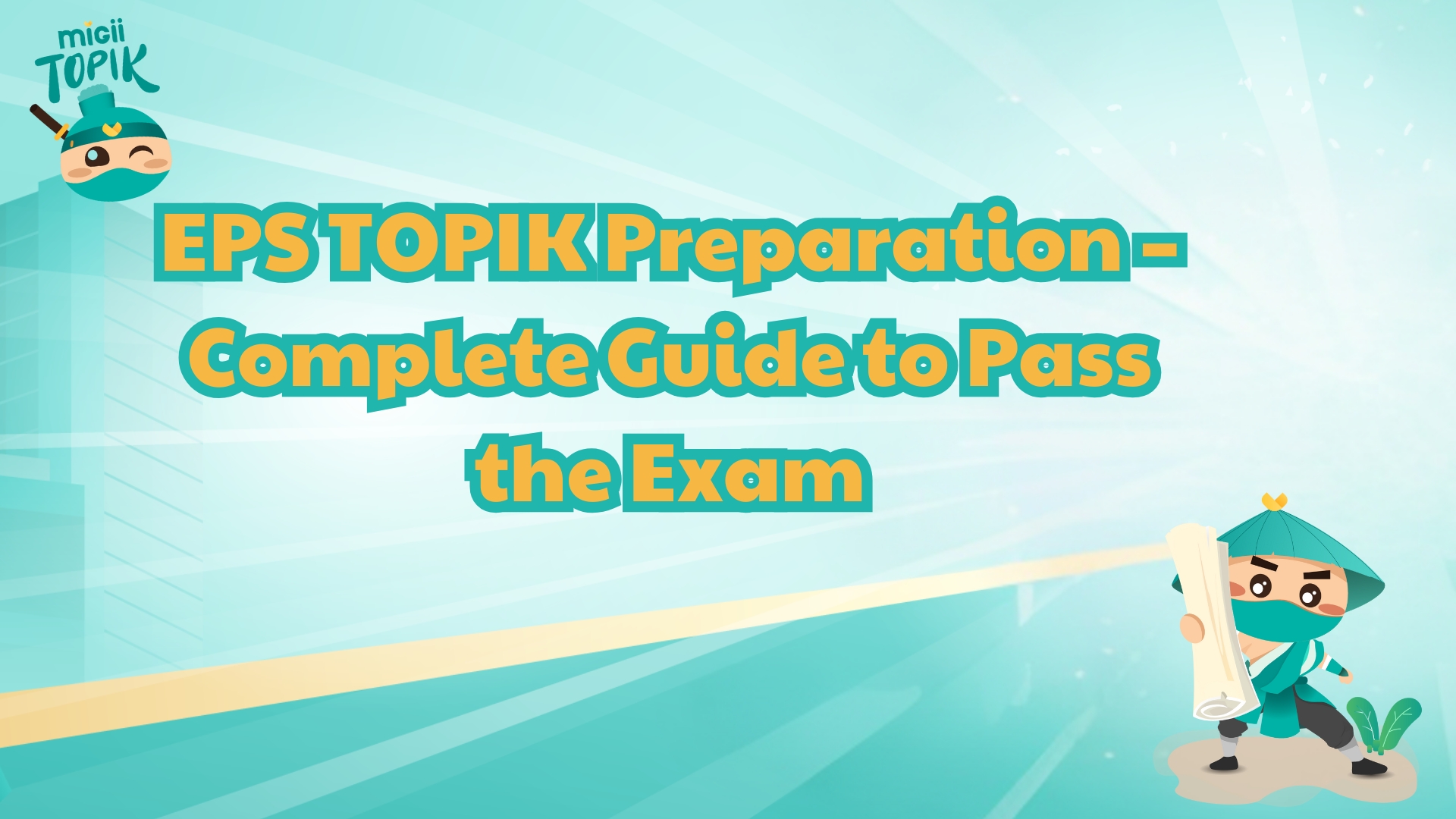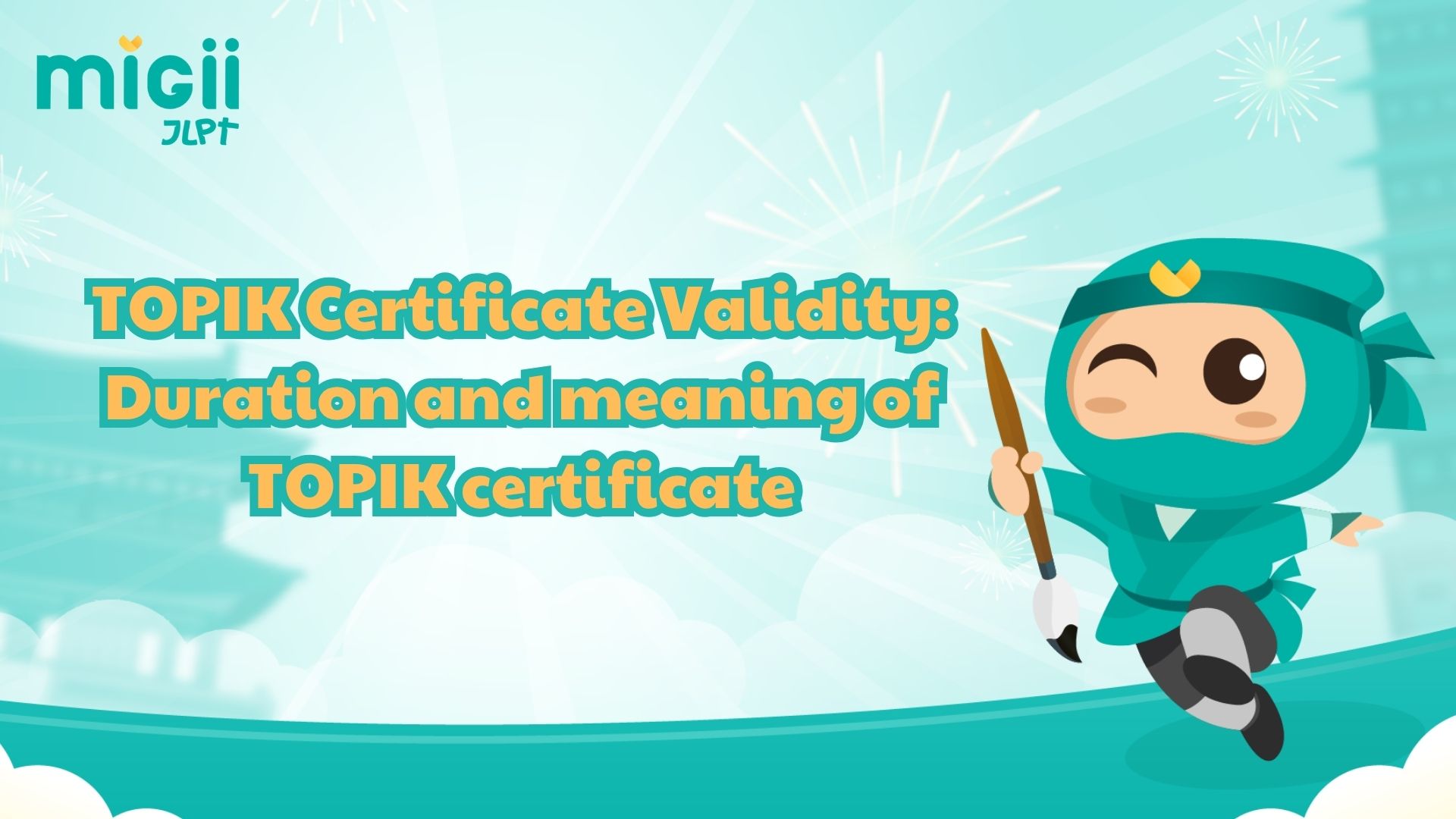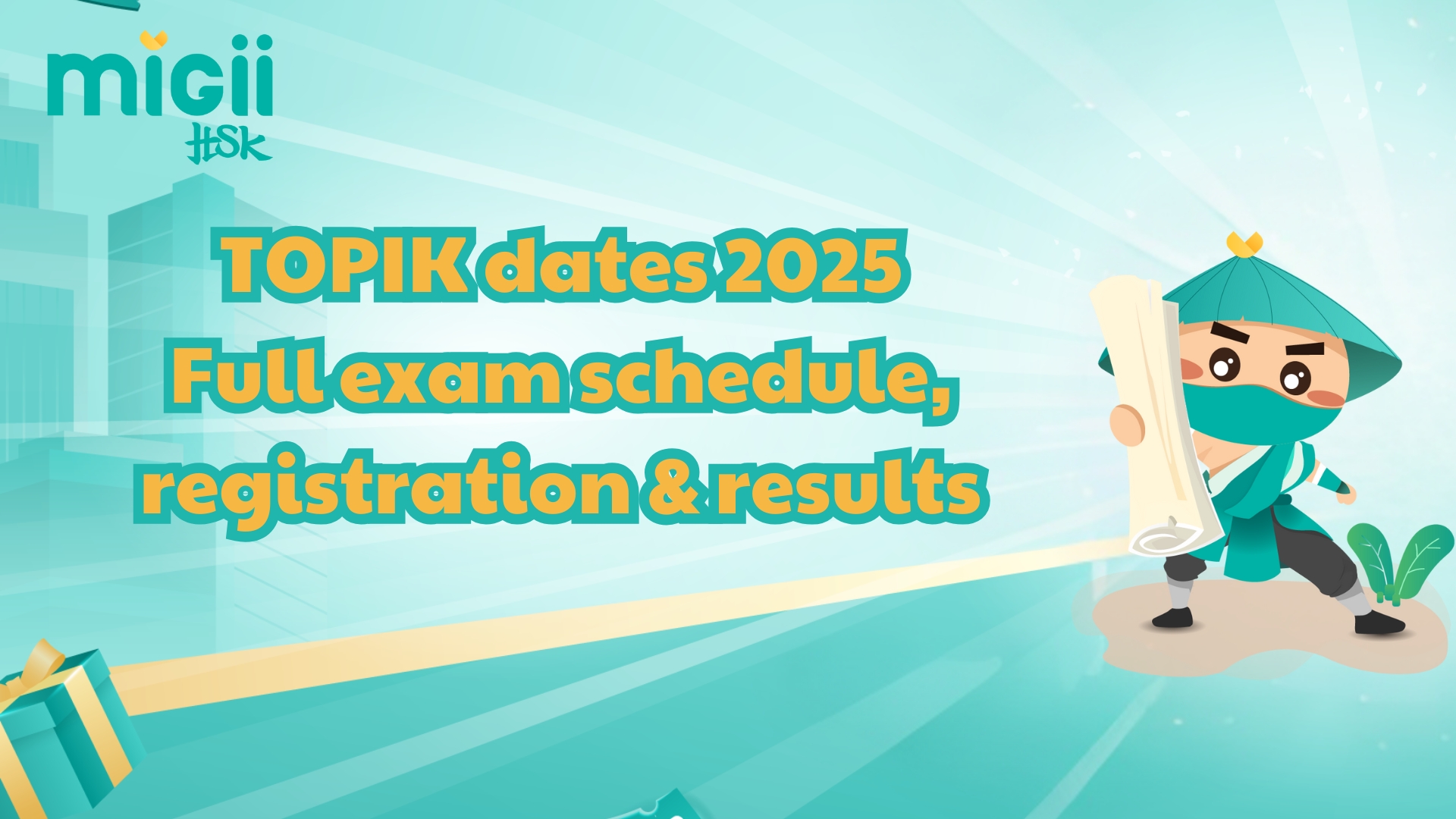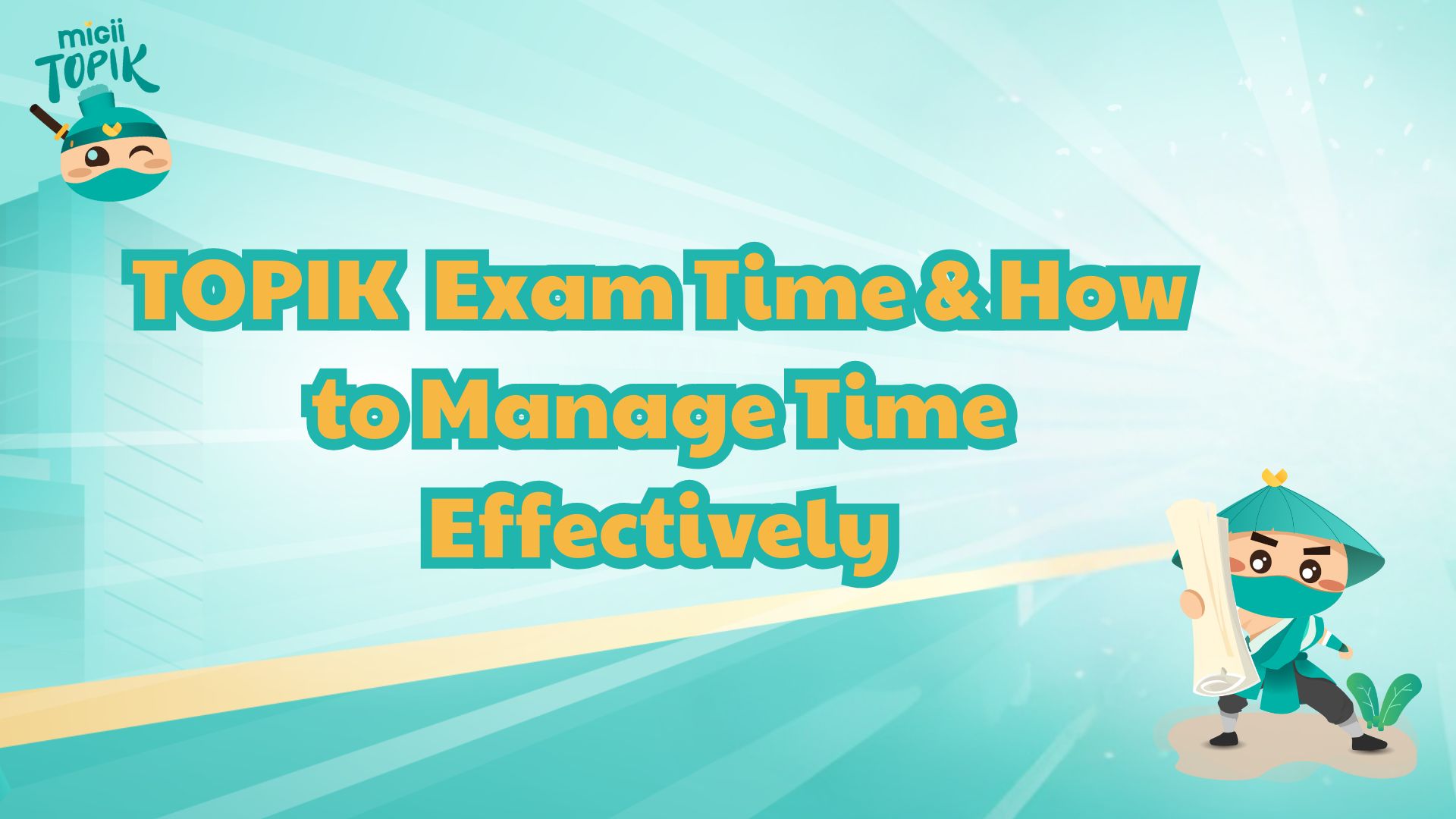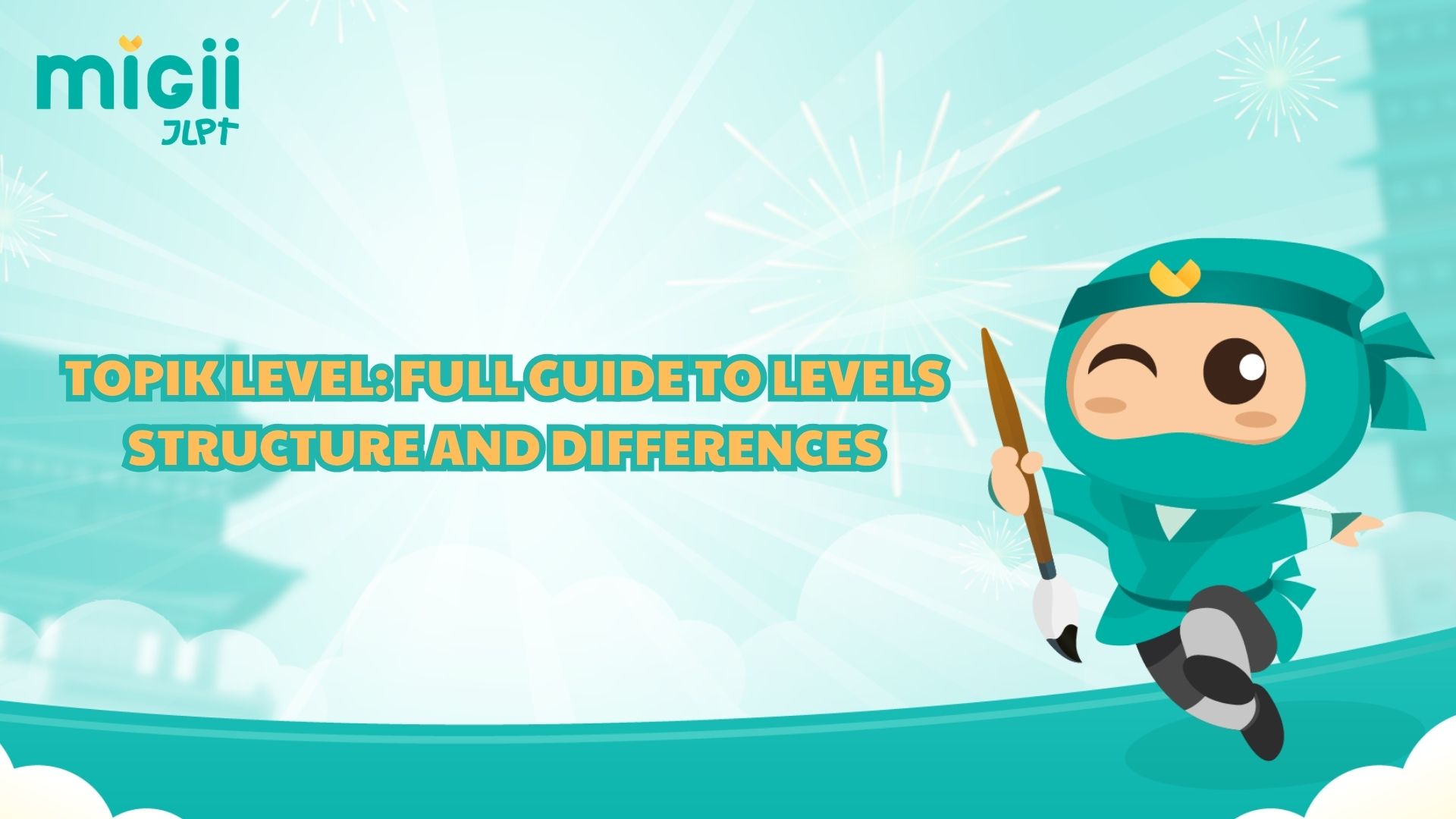JLPT N4 is one of the most popular levels in the Japanese Language Proficiency Test. It helps learners demonstrate their ability to communicate clearly in everyday situations. If you're looking to understand what JLPT N4 is and how to conquer it successfully, this article is for you.
Here, you'll discover the complete structure and question types of the JLPT N4 exam.
To score 150+ on the test, you’ll need more than just knowing the material — having the right strategies and proven JLPT N4 tips is essential. In this article, Migii JLPT will walk you through practical guidance based on real JLPT N4 experience, covering every skill section so you can prepare confidently and effectively.
JLPT N4 Exam Structure
Language Knowledge (Vocabulary & Kanji)
Total Questions: ±35 | Time: 30 minutes
|
Subsection |
Number of Questions |
Purpose |
|
Kanji Reading |
9 |
To test your ability to read kanji characters |
|
Writing Kanji from Hiragana |
6 |
To convert Hiragana into the correct Kanji |
|
Word Completion in Context |
10 |
To select the most suitable word in a sentence |
|
Expression Rewriting |
5 |
To express the same idea in a different way |
|
Word Meaning in Context |
5 |
To understand the correct meaning of a word in use |
Grammar & Reading
Total Questions: ±35 | Time: 60 minutes
|
Subsection |
Number of Questions |
Purpose |
|
Sentence Grammar (Type 1) |
15 |
Choose the correct grammar structure |
|
Sentence Building (Type 2) |
5 |
Rearrange words into a correct, meaningful sentence |
|
Short Reading |
4 |
Understand short texts (100–200 characters) |
|
Medium-Length Reading |
4 |
Understand medium texts (~450 characters) |
|
Information Retrieval |
2 |
Find specific information in a longer passage |
Listening Comprehension
Total Questions: ±28 | Time: 35 minutes
|
Subsection |
Number of Questions |
Purpose |
|
Topic Understanding |
8 |
Identify the main idea of the conversation |
|
Key Point Identification |
7 |
Catch important information from the audio |
|
Dialogue |
5 |
Choose the correct response based on a conversation |
|
Quick Response |
8 |
Respond naturally to short, everyday questions |
JLPT N4 Question Types & Tips
Mondai 1 – Vocabulary & Kanji Section
To answer correctly in this part of the test, you need to understand a few key Kanji concepts at the JLPT N4 level, especially:
- Chouon (Long Vowels)
- Dakuon (Voiced Sounds)
- Sokuon (Double Consonants – small “っ”)
Chouon (Long Vowels)
Some kanji ending in sounds like “ng” or “n” often include a long vowel when pronounced.
Example: 青年 is read as せいねん (seinen), meaning “young man.”
JLPT N4 Tips: When you study JLPT N4, try to memorize not just the meaning of each kanji but also the sound pattern, including long vowels.
Dakuon (Voiced Sounds)
When the first kanji ends with つ (tsu) and is followed by a kanji starting with the は (ha) row, it usually becomes a sokuon and changes to っぴ (ppi).
Example: 月 (gatsu) + 日 (hi) = 月日 → がっぴ (gappi) meaning “date.”
Sokuon (Double Consonants)
If the first kanji ends with く (ku) and the next kanji starts with か (ka), it typically changes to a small っ (tsu).
Example: 学 (gaku) + 校 (kou) = 学校 → がっこう (gakkou), meaning “school.”
Effective Strategy to Avoid Mistakes
Most kanji have two types of readings:
- On-yomi (Chinese-origin reading)
- Kun-yomi (Native Japanese reading)
Use this rule of thumb:
- If the kanji stands alone → it usually takes kun-yomi
- If it is part of a compound (with another kanji) → it often uses on-yomi
That’s why learning JLPT N4 is more than just memorizing meanings—you need to practice kanji within sentence context so you can choose the correct reading confidently.
Mondai 2 – Choosing Kanji or Katakana Based on Hiragana
In Mondai 2 of the JLPT N4 exam, you’ll be asked to choose the correct Kanji or Katakana character that matches a given Hiragana reading. This might seem simple at first, but it still requires careful attention and solid strategy.
JLPT N4 Tips for Mondai 2
This section tests both your visual recognition and understanding of Japanese character forms—especially your ability to distinguish between similar-looking Kanji and Katakana. Here are some practical tips from real JLPT N4 experience:
Be Aware of Similar Kanji
Many Kanji look almost identical and differ only by a small stroke or line length. These can easily confuse beginners.
Common examples of confusing pairs:
- 本 (hon) vs 木 (ki)
- 日 (hi) vs 目 (me)
- 未 (mi – not yet) vs 末 (matsu – end)
- 入 (iri – to enter) vs 人 (hito – person)
- 内 (uchi – inside) vs 肉 (niku – meat)
- 万 (man – ten thousand) vs 方 (hou – direction)
JLPT N4 tips: While you prepare, don't just memorize the shape - learn the meaning and usage in context.
Watch Out for Similar Readings
Some answer options may share similar or identical readings, so reading just the word isn't enough—you must read the entire sentence to understand the meaning.
Example: “にん” could be written as 人 (person) or 認 (to acknowledge), depending on the sentence context.
Time Management
This is one of the easier parts of the test, so you don’t need to spend too long on it. With around 8 questions in this section, aim to finish it in approximately 3 minutes.
Mondai 3 – Choosing the Most Contextually Appropriate Word
Unlike Mondai 1 and 2, Mondai 3 requires more than just recognizing Kanji readings or forms—you need to read the entire sentence and understand the context to pick the most appropriate word.
This section tests your real usage of vocabulary in sentence structure.
JLPT N4 Tips for Mondai 3
This part assesses your ability to understand context and how vocabulary is used within a sentence. In the JLPT N4 exam, many learners get tricked by this type of question if they only memorize word meanings without understanding actual usage
Watch Out for Collocations (Fixed Word Pairs)
When you study JLPT N4, it's essential to learn words that often appear together or form fixed expressions.
Common collocations:
- 電話をかけます (denwa o kakemasu – to make a phone call)
- 会社をやめます (kaisha o yamemasu – to quit a job)
- 役に立ちます (yaku ni tachimasu – to be useful)
JLPT N4 tips: Memorizing these expressions helps you quickly recognize patterns and choose the right answer faster and more accurately.
Make Sample Sentences While Studying
Instead of memorizing words in isolation, you should practice making example sentences whenever you learn new vocabulary.
This reinforces memory and helps you better understand how words are naturally used.
Pay Attention to Particles Around the Blank
Particles like を, に, が, and で that come before or after the blank give you strong clues about the type of word needed.
Examples:
- If the sentence includes "を" before the blank, you're likely looking for a transitive verb.
- If you see "に" after the blank, the correct answer might be a place or recipient noun.
Understanding these grammatical cues is a powerful tool in tackling Mondai 3 with confidence.
Mondai 4 – Finding the Sentence with the Same Meaning
In Mondai 4 of the JLPT N4 exam, you are asked to choose the sentence that has the closest meaning to the original sentence in the question. This is considered one of the most challenging yet highest-value question types in the 「文字・語彙」 (Vocabulary & Kanji) section—with 5 questions to be answered ideally in about 4 minutes.
JLPT N4 Tips for Mondai 4
Focus on Fully Understanding the Original Sentence
One of the biggest mistakes learners make is failing to understand the full meaning of the sentence provided.
JLPT N4 tip: Start by reading the underlined part of the sentence first. Understand its core meaning, then compare that with the answer choices.
Learn How the Same Meaning Can Be Expressed Differently
In Japanese, one meaning can be communicated through multiple sentence patterns, such as:
- Direct vs. indirect expressions
- Verb variations like あげます (to give), もらいます (to receive), くれます (to give to me)
When you learn JLPT N4 in a contextual way, you'll get used to spotting these patterns and won't get confused by structural differences.
Watch for Synonyms and Paraphrasing
Some questions will use different words or phrases to convey the same idea.
Examples:
- "手伝ってくれました" (helped me) ≈ "助けてくれました" (also helped me)
- "病気になりました" (became sick) ≈ "体の調子が悪くなりました" (my physical condition worsened)
These JLPT N4 experience-based connections come only through consistent reading and sentence practice.
Strategy for Solving Mondai 4 Questions
- Focus on the core meaning, not just word-by-word translation
- Identify grammar patterns, subjects, and objects
- Avoid choosing answers that look similar in form but differ in meaning
This section truly rewards learners who study contextually and practice paraphrasing regularly.
Mondai 5 – Choosing the Sentence That Uses Vocabulary Correctly
In Mondai 5 of the JLPT N4 exam, you are asked to choose the sentence that uses the vocabulary word accurately in both meaning and context.
You’ll need to evaluate four different answer choices and select the one where the word is used naturally and appropriately in a sentence.
JLPT N4 Tips for Mondai 5
For many learners, this is one of the most challenging parts of the JLPT N4 because:
- You need to read and analyze four full-length sentences
- You must determine contextual correctness, not just dictionary meaning
- Simply knowing a word’s definition isn’t enough—you need to know how it’s actually used
Extra Challenge for JLPT N4 Learners
If you don’t know the meaning of the target word, random guessing becomes very difficult, since the answer choices are often similar in grammar and sentence structure.
That’s why during your JLPT N4 preparation, it’s crucial to read a lot and memorize vocabulary in phrase or sentence form, not just as standalone words.
Special Strategy for Mondai 5
Here’s an effective JLPT N4 tips:
- Read all answer choices first
- Try replacing the underlined word with a synonym or similar word
- If the sentence still makes sense, it might be incorrect
Because if the word is truly correct and natural, it typically can’t be substituted without changing the meaning
Example:
- Original: "先生に相談します" (I’ll consult the teacher)
- Try replacing "相談します" (soudan shimasu – consult) with "話します" (hanashimasu – talk)
→ The meaning changes, so "相談します" is likely the correct word in this context
This technique helps you avoid common traps and focus on natural usage, which is key to passing Mondai 5 with confidence.
Conclusion
Passing the JLPT N4 with a score of 150+ is absolutely possible when you study smart and stay consistent. Master the key skills—vocabulary, grammar, and reading—with practical JLPT N4 tips and real test experience. To level up your prep, start learning with Migii JLPT, your all-in-one platform for structured practice, timed mock tests, and smart AI feedback. Try it today at migii.net and get closer to your JLPT N4 goals!
